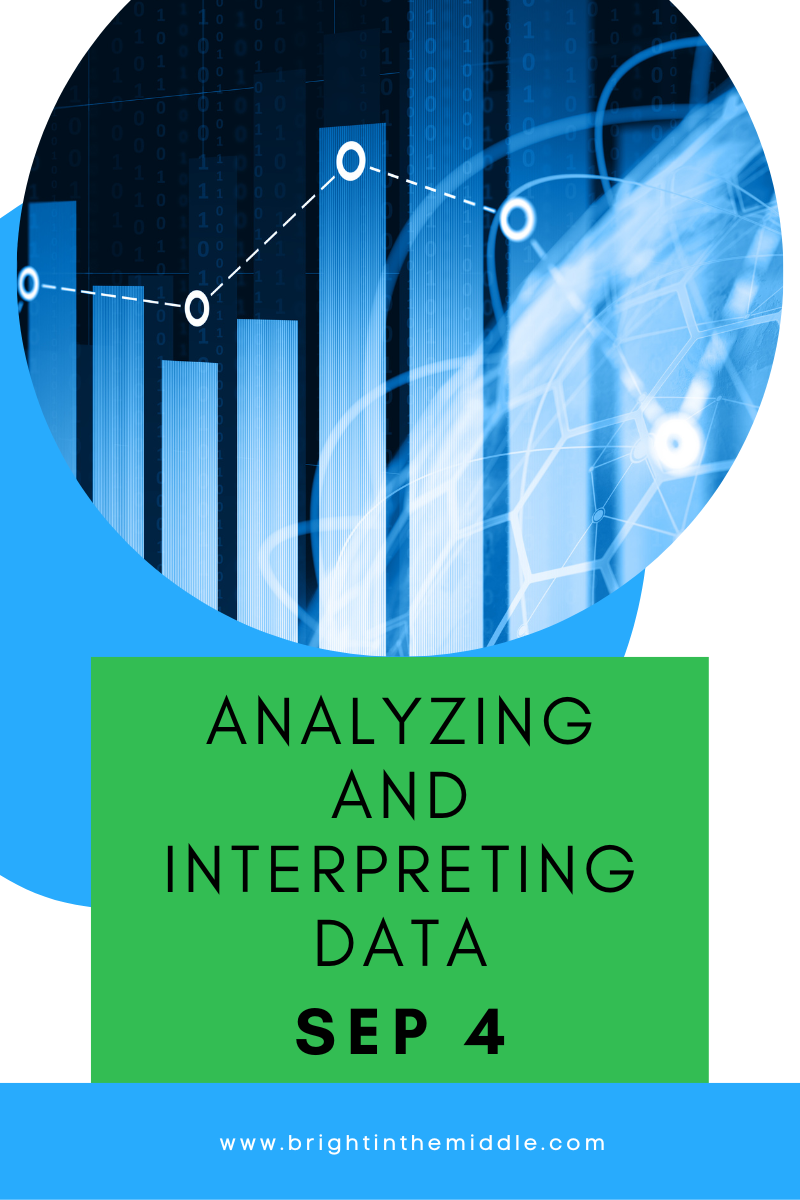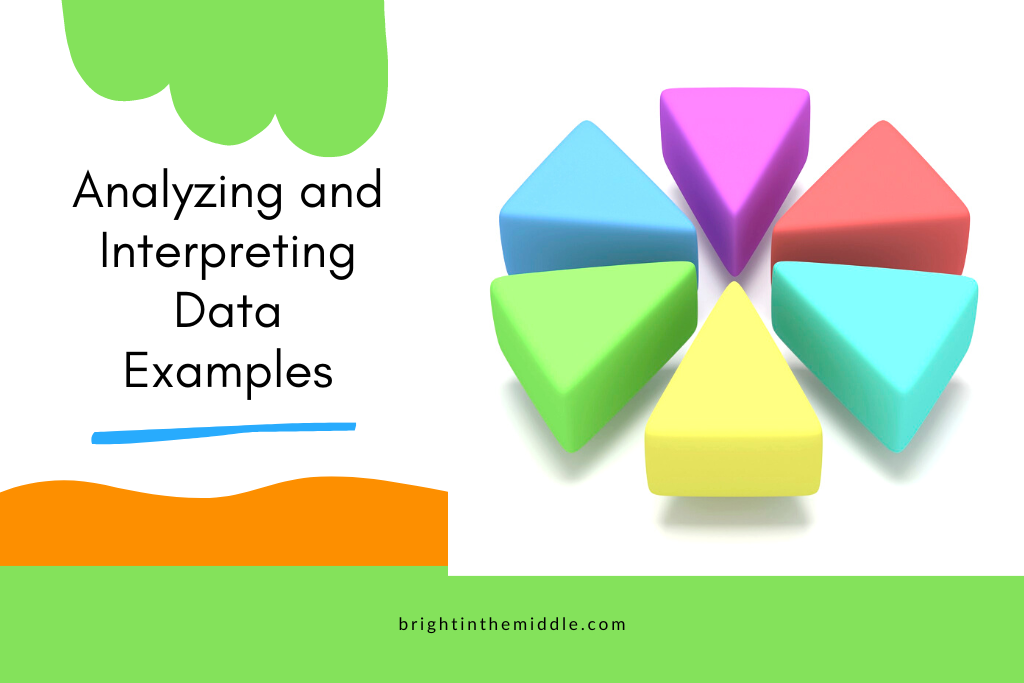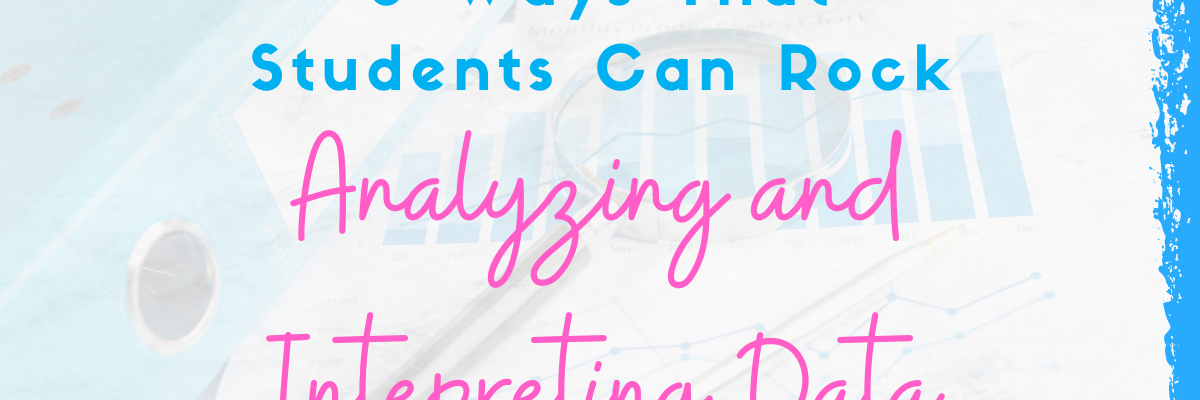Why is Analyzing and Interpreting Data Important?
Looking for an analyzing and interpreting data definition? Let’s look at what this looks like for scientists and engineers.
Scientific Investigators: produce data that should be analyzed to draw conclusions and derive meaning. There are different tools that can be used to find special patterns, trends, etc. These can be tabulation, graphical, visual, or statistical. Modern technology helps the process of data collection become much smoother, especially large data sets!
Engineers: They collect data and analyze it for their designs and investigations of their designs. This allows them to compare different solutions they may have. Like scientists, there are many tools to help determine trends, patterns, and the like.

What Does Analyzing and Interpreting Scientific Data Look Like in Middle School?
How to Analyze and Interpret Data – Overall Expectations
The process of collecting, analyzing, and interpreting data starts at the elementary school level. In middle school, students progress on what they learned in elementary school. They look more into numbers and math when they look at the data. They are more in tune with looking for patterns and figuring out averages. Scatter plots are great for determining patterns. They should know how to find the line of best fit. This is a common core math standard: 8.SP.2. They also get better and determine whether things are correlated or if there is causation.
For graphs, students learn more complicated ways to present and analyze data. They can use tools to handle bigger data sets.
Another thing that middle school students do is learn more about spotting errors in their data and trying to figure out how to make it more accurate.
Collecting, Analyzing Data, and Interpreting Data
Students should be able to collect data and organize it. One way to do this is in a table. Students should put the independent variable in the left column and dependent variable in the right column. They should definitely know the difference between an independent variable and a dependent variable.
Students should be about to graph this data. Students should be able to use bar graphs (comparing groups), pie charts (comparing parts of a whole), line graphs (showing change over time), and scatter plots (showing relationships between variables).
In elementary school, you may have to tell students how to graph data, but in middle school, students should begin to figure out which graph to use on their own.
By the end of middle school, students should be able to use standard techniques for displaying, analyzing, and interpreting data. This could be using different types of graphs, being able to identify outliers in the data, and using averaging to reduce measurement errors. Students should also be able to explain why these techniques are used.
Ways to Rock the Analyzing and Interpreting Data in Your Classroom
Do More Hands-On Experiments
If you do more hands-on experiments in your classroom, it will give students more opportunities to analyze and interpret data in your classroom. They may need practice, especially if they didn’t get the skills in elementary school. If they don’t have the skills to do this, that doesn’t mean to skip it all together. It will just take longer to learn the skills.
Here are some examples of hands-on experiments where students can collect, analyze, and interpret data.
Plant Growth
This is a classic example. Students can grow plants using different variables to see what helps plants grow the best. Students can collect data of the height of the plant over a period of time.
Water Quality
Students can collect data on different sources of water such as bathroom sink water, water from the teacher’s home, and a local pond. They can look at indicators such as pH, dissolved oxygen, and bioindicators to compare them all.
Use Real-World Data Sets
There are some topics in your classroom that are just impossible to collect the data for. We leave that to the lovely scientists out there. It is great for students to see real data that has been collected and see how it is graphed. With that, students can analyze and draw their own conclusions about the data. Here are some examples on how you can use real-world data sets in your classroom to meet this SEP.
Climate Data
Students can look at climate data. The best way to view this data is to look at graphs and visualizations that have already been created. You can then have a discussion with your students on why they think the scientists presented the information in that way. Here are some ways to visualize climate data.
Health Statistics
Another example of real data sets you can look at are health statistics. This goes with many life science topics. For example, you can have students look at flu data when discussing infectious diseases.
Use Technology Tools
Graphic Software
One common software students use to enter their data into is a excel spreadsheet. This is great because there are many options for students to display their data when it is all entered in. For example, students may collect data during a kinetic energy lab and then use excel to create a scatterplot and find the line of best fit.
Data Visualization Apps
An example of a visualization app is Tableau Public. Students can take data from anywhere (online) or something they do in class (like the plant growth experiment) and import the data into this visualization app. If you are unable to get the desktop version on the school computers, you can import the data on your own!

Encourage Discussion and Collaboration
In anything you do, collaboration between students is a must. They can always learn from each other.
Peer Review
After students analyze and interpret their data, have them switch off with a partner. How do their conclusions compare? See if they can come to a consensus while reviewing each other’s data.
Debates
Maybe there are some discrepancies in the data. Have students defend their interpretations of the data.
Emphasize Error Analysis
As mentioned, error analysis is something that middle school students should focus on. There are different things that could occur when data is collected so they should continue to focus on ways to avoid these errors.
Multiple Trails
One way to do this is to do multiple trials when conducting an experiment. They can use the data from the multiple trails to find an average of the data, decreasing errors
Data Impacting Variables
Another thing that students can do is to determine what things could affect that data from the start. For example, when measuring the distance of objects from a starting point, students should make sure they begin measuring from the same spot each time. In addition, they should be sure to use the same metric each time.
How do you emphasize this science and engineering practice in your classroom? Let me know in the comments!
More Resources:
Help your students master science content!



[…] Analyzing And Interpreting Data […]